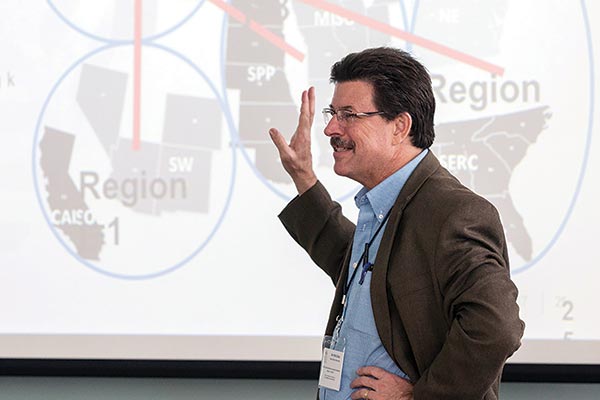
James McCalley is working with researchers from across the nation to find ways to tie the United States’ largest – but separate – electricity grids together. In a study that is part of a U.S. Department of Energy $220 million Grid Modernization Initiative, McCalley and his Iowa State University researchteam are building computer models simulating 15 years of grid improvements and operations to study the best ways to generate renewable power and transmit it to and from the major eastern and western U.S. grids.
McCalley’s team is evaluating four different designs, ranging from maintaining existing limited cross-grid capacity to creating a new macrogrid that establishes connections between the West Coast and the Midwest.
Models indicate that there is good reason to connect and modernize the county’s largest energy grids.
“There are two main drivers for benefits of ‘cross-seam’ transmission,” says McCalley, an Anson Marston Distinguished Professor of Engineering and the Jack London Chair in Power Systems Engineering in the department of electrical and computer engineering. “That’s wind energy moving from the middle of the U.S. to the coasts and sharing the capacity between regions for reliability purposes. In Iowa, about 35 percent of our electricity is renewable energy. If we want the rest of the country to be at 35 percent renewable energy, this is what you want to do.”